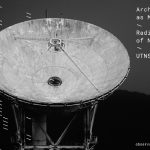Week 6: 2/28
Stress-testing Observation Scores (Instructions)
“The first examples of what were to become Fluxus event scores date back to John Cage’s famous class at The New School, where artists such as George Brecht, Al Hansen, Allan Kaprow, and Alison Knowles began to create art works and performances in musical form. One of these forms was the event. Events tend to be scored in brief verbal notations. These notes are known as event scores. In a general sense, they are proposals, propositions, and instructions. Thus, they are sometimes known as proposal pieces, propositions, or instructions.”
the Fluxus P e r f o r m a n c e Workbook
edited by Ken Friedman, Owen Smith and Lauren Sawchyn
a Performance Research e-publication 2002
“Paradigm (for Dick Higgins)
Locate an object, not spatially isolated from other objects of its kind nor different from them in any significant way, and designate it the current existing model for all such objects. Observe how the distinctiveness of that object emerges under these conditions.”
Fluxus Event Score, by Peter Frank, 1983
In-class workshop
We will re-visit the discussion around your instructions and compare visual documentation.
Homework
1. Revise Observation Score.
2. Describe in one paragraph how your Observation Score relates to what you are interested in.
3. Bring examples of the expected visual outcome (these can be found visuals).
Field Trip on 3/6:
We will be meeting at 12.45pm:
Balck Cat LES
https://blackcatles.com/
172 Rivington St
1. Participant Gallery
Jonathan Berger
AN INTRODUCTION TO NAMELESS LOVE
http://participantinc.org/
253 E Houston St
2. Callicoon Gallery
Thomas Kovachevich
http://www.callicoonfinearts.com/
49 Delancey Street
3. The talk will be at ULTERIOR gallery at 2pm:
http://www.ulteriorgallery.com/camel-collective
172 Attorney St





Comments by Pascal